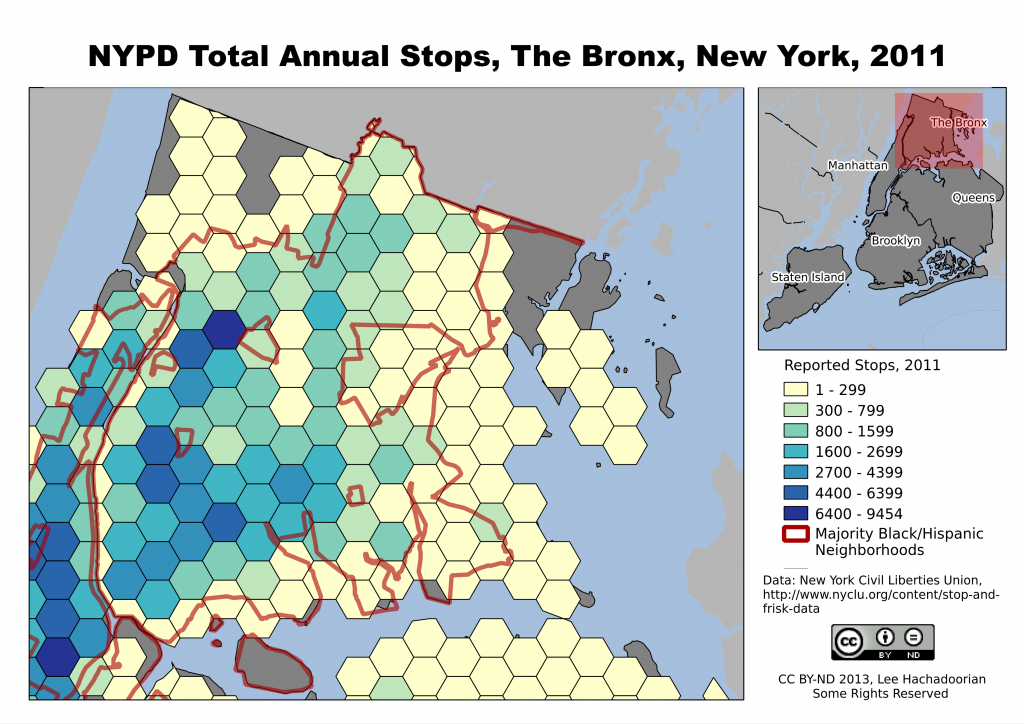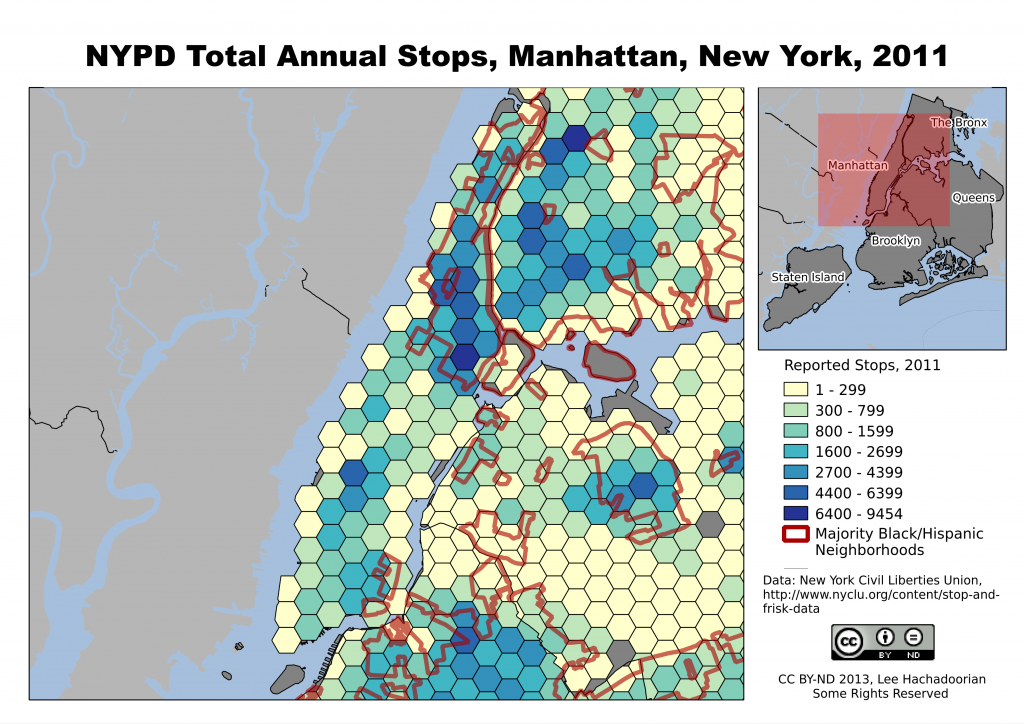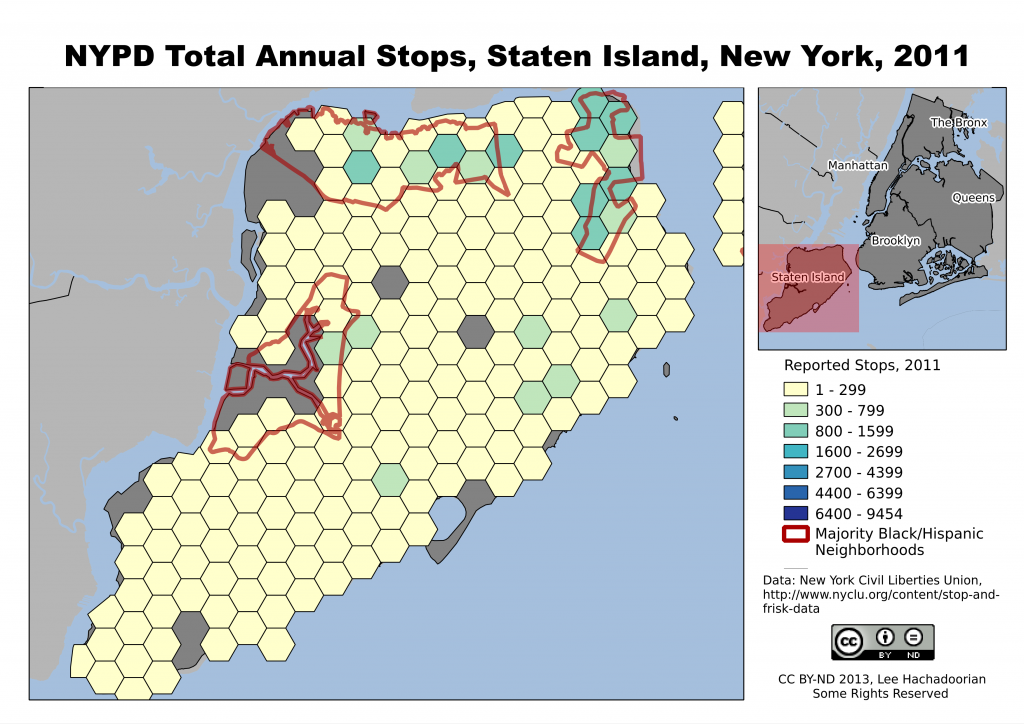Should We Tax Internet Retail?
Lee Hachadoorian on Dec 7th 2013
Last weekend I saw an episode of The Good Wife (it’s a few weeks old, I’m a little behind) in which the governor-elect of Illinois decides to send a message to fictional tech giant ChumHum by publicly floating the possibility of collecting taxes on the sales of out-of-state, internet-based companies. Then at the beginning of this week the Supreme Court declined to hear Amazon’s appeal of New York State’s real-life law requiring just that. (ChumHum always struck me as a Google stand-in rather than an Amazon stand-in, but, whatever.) People tend to view Amazon as the evil giant in this case, with some commenting that “It’s about time” they started paying their fair share. But I think there’s a tendency to lump this in with more general concerns about corporate tax avoidance, and I want to suggest some reasons why the new regime is undesirable.
First, Amazon isn’t necessarily going to be the one paying the tax. Sales taxes tend to get split between the seller and the consumer, with consumers absorbing more of the tax on necessities (it’s difficult to stop buying food, or, for that matter cigarettes), and sellers absorbing more of the tax on luxuries. Now, Amazon is probably mostly selling things that fall more toward the luxury end of the spectrum, but some of the tax will be absorbed by consumers. Of course, the real point of the law is that requiring Amazon to collect sales taxes levels the playing field between out-of-state and in-state businesses, but some sales Amazon would have made won’t be substituted by an in-state purchase, because the consumer will decide that the after-tax price is too high. This represents a loss to Amazon, no gain to any in-state seller, and a loss to the consumer. Some consumers will still make purchases, so the state government will still collect new revenue.
Second, and more important, sales taxes are fairly regressive. Lower-income households spend a relatively greater proportion of their income than upper-income households, so if we consider the tax as a percentage of income, lower-income households are paying a higher percentage. New York tries to make the sales tax less regressive by exempting necessities like food, but it’s tax exemptions are notoriously bizarre. For example, nuts are not taxable, unless they are honey-roasted, in which case they become taxable again. Rather than extend a regressive tax to out-of-state purchases, New York could reduce the sales tax on in-state purchases. The lost revenue could be made up by increases in the income tax or (for localities like New York City that rely on a sales tax increment) the property tax. This would be a more progressive outcome, but of course it is much harder politically to raise taxes on in-state sources than to impose a tax that seems to fall on an out-of-state source. But since the sales tax reduction would increase in-state sales, in theory the lost revenue could be offset (this would need to be modelled) by increased revenue from business income taxes and from property taxes, even without an increase in those tax rates.
Third, the whole reason this is an issue is because it was relatively easy for consumers to avoid the sales tax by ordering from out of state. One could argue that governments should try to avoid taxes which are easily avoided. Out of the big three, sales taxes are most easily avoided, income taxes less so (there is some debate over the impact of tax-related migration, but one recent study flat out calls tax flight a “myth”, Gerard Depardieu’s move to Russia notwithstanding), and property taxes are least easy to avoid. In fact, the land portion of the property tax is completely unavoidable, while the capital (structure or building) portion may cause some capital flight if the tax is much higher than in competing jurisdictions. Because sales taxes are relatively easy to avoid, and because there are a large number of taxing jurisdictions that businesses have to keep track of, there have been some noises in Congress about standardizing sales tax rules across the states. This is a bad idea for reason number two, regressivity. Consumption taxes are pretty popular among conservatives as an alternative to the income taxes, I would argue specifically because consumption taxes are so regressive (but see Robert Frank’s discussion of a progressive consumption tax). My concern is that if we back ourselves into a national sales tax, it will gradually eat away at the income tax, leading to an overall more regressive tax system.
Finally, to the extent that this tax does fall on Amazon, we can ask what kinds of businesses we want to be taxing. The Mining, Quarrying, and Oil and Gas Extraction sector pays on average 6% of corporate income in taxes [gated link]. So if we were looking for new revenue…
Filed in Federalism,Public Finance | Comments Off on Should We Tax Internet Retail?
Maps of NYPD Stops, 2011
Lee Hachadoorian on Dec 2nd 2013

The Bronx is heavily Black and Latino, and shows a high number of NYPD stops over much of the borough.
There have been a lot of ups and downs in the battle over the NYPD Stop and Frisk program. Over the Summer, a federal judge ruled the program unconstitutional as practiced, and appointed a federal monitor to oversee reforms. Then, a month ago, a federal appeals panel removed Judge Scheindlin from the case, and put a stay on her orders. Bill de Blasio was elected mayor promising to drop the City’s appeal, but lame duck Mayor Bloomberg tried to push the appeal to a full overturning of Judge Scheindlin’s ruling before leaving office. Now the full Second Circuit has put on hold any further action while the litigants negotiate—clearly taking the ball from Bloomberg and passing it to the mayor-elect.

Stops are concentrated in predominantly Black and Latino neighborhoods like Bedford-Stuyvesant and East New York in Brooklyn, and East Elmhurst and Jamaica in Queens.
Much of the focus in the case has been on whether the Stop and Frisk program was implemented in a racially biased manner, with considerable concern over the targeting of young Blacks and Latinos. The maps I’ve created, based on the 2011 statistics, do show many more stops taking place in predominantly Black and Latino neighborhoods. The maps do not show the race of the people being stopped, an important consideration in the trial, as plaintiffs presented evidence that the “hit rate”—stops that actually led to the discovery of a crime—was much lower for Black and Latinos than for Whites, indicating that the police were using a different, and looser, standard for what they regarded as suspicious behavior by Blacks and Latinos.
The main exception to the correlation between neighborhood demographics and volume of police stops is in Manhattan. We do see a concentration of stops in the Black and Latino neighborhoods of Harlem and Washington Heights, but we also see generally higher stops in Manhattan than in the outer boroughs. Doubtless this is due to Manhattan’s generally higher nonresidential population (commuters, shoppers, etc.), as well as the generally higher pedestrian counts in Lower Manhattan and Midtown.

Manhattan, with its high daily influx of nonresidents for employment, shopping, and commercial activities, has high numbers of NYPD stops throughout the borough.
While the differences in “hit rate” helped Judge Scheindlin conclude that this policy led to “indirect racial profiling”, the ridiculously low yield—less than 12% of stops led to a summons or arrest in 2011 (about equally split)—suggests that the police are extremely poor judges of suspicious behavior. But what do you expect of a policy that allows the police to stop someone for “inappropriate attire for season” (about 7.5% of stops in 2011)?
Filed in GIS,Governance | One response so far
When Soda is Outlawed, Only Outlaws Will Be…
Lee Hachadoorian on Jul 3rd 2012
Mayor Bloomberg’s proposed ban of sugary drinks larger than 16 ounces has been making national news. Industry groups are lined up against it, and 64% of New Yorkers are opposed to it. The industry is organizing opposition around the concept of “freedom of choice”. Jon Stewart has repeatedly made fun of the fact that in New York, carrying 25 grams of marijuana is now “legal” (actually, a violation which can be ticketed but which one cannot be arrested for), while drinking a large soda is “illegal”.
It of course would be silly (so I will do it) to criticize a humorist on facts, but pot smokers (or carriers) will still be issued citations, but can no longer be arrested. This change was necessary because the police, under the controversial Stop-and-Frisk program, were regularly stopping young black and Latino men, asking them to turn out their pockets, and then arresting them for “displaying” marijuana, when merely “carrying” marijuana was a violation. Now displaying or carrying are treated the same. This is not a major shift in drug policy, and to my mind doesn’t do nearly enough to rein in the utterly offensive Stop-and-Frisk program.
Soda carriers, or displayers, won’t be subject to ticketing or arrest under the proposed “ban”, but certain businesses won’t be allowed to sell large sodas. As far as I can tell (I couldn’t find an “official” proposal—if you can find one, please let me know in the comments) this would only apply to food service establishments. You could still buy a two-liter bottle of Coke at the corner bodega and walk down the street drinking it. Meanwhile, let’s compare the damage done by soda versus the damage done by marijuana. Estimates of obesity-related mortality are in the hundreds of thousands annually. Estimated deaths due to marijuana use are approximately zero, give or take nothing. (In fact, a Google search of “marijuana mortality” turned up this study indicating that marijuana use may lower mortality among people suffering from psychotic disorders.)
But Stewart’s comparison of food policy and drug policy is apt. Certain foods (sugary drinks, but not broccoli) and certain drugs (methamphetamine, but not marijuana) lead to extremely serious health problems for some people. And many users, of sugar and of meth, want to use less, but have a hard time stopping. One message of the poll linked above is that almost 3 million New Yorkers (36%) approve of the proposed ban. How many of them are people who want to reduce their caloric intake, but find it hard to avoid when every fast food joint tries to upsell them to the larger cup size? It is well-established at this point that (a) behavior is strongly influenced by the social environment, and (b) short-term gratification usually trumps long-term rationality, even in people who want to make and stick to the long-term rational decision. So freedom of choice should include the freedom to drink soda, but also the freedom to live someplace where one isn’t continually encouraged to engage in unhealthy behaviors.
Robert Nozick, philosophical champion of libertarianism, concludes his influential Anarchy, State and Utopia with a chapter entitled “A Framework for Utopia”. After spending a book defending the idea that there is no justification for a more-than-minimalist state—i.e., no paternalistic prohibitions, no economic redistribution—he argues that this only applies to a national or central state. Local communities, from which people would be allowed to exit at any time, could allow things, such as public nudity, which many or most other communities find offensive; or prohibit things, such as large sugary drinks, that many or most other communities find unexceptionable.
The main complaint that can be leveled against Mayor Bloomberg’s plan is not that it isn’t good policy, but that it is policy not democratically arrived at. If people should be free to live someplace that prevents them from drinking too much soda, they should also be free to live someplace where they can drink as much soda as they want. The questions become (a) at what scale should the rule be implemented, and (b) how do you deal with the transition? Clearly these kind of rules should be applied at the local level, not the federal level, and probably not at the state level either. Nozick argued these kind of restrictions should only be allowed in “face to face” communities. I take that to mean something approximating a neighborhood, though I think in order to be effective that many policies (particularly economic and planning policies) would have to be implemented at something like a metropolitan area. New York City is a unique case, as it is larger by itself than many metropolitan areas, but still only one part of its own metropolitan area. Thus a policy which would be thoroughly justifiable if enacted by a small suburban municipality, is more ambiguous in the case of New York.
Here Mayor Bloomberg would be well-advised to consider the opinion of New Yorkers, which appears to be against the plan. But if people should be free to choose to live in a place with a soda ban (or a drug ban, or a cheese ban), what do you do when a substantial minority wants such a policy, but no single place has a large enough majority to enact it? That is, what if 34% of the nation wanted a local soda ban in their community, but no single municipality had a majority in favor of the ban? In this case, it might be allowable for some local government to enact the ban in spite of local opposition, and expect population to gradually equilibrate to the new reality—as some residents found that they did indeed like the ban in spite of their earlier opposition, and others moved away and were replaced by new residents who moved in with full knowledge of the rule. Again, New York City’s unique size in the American system of cities makes the justifiability more ambiguous. A better approach for Mayor Bloomberg might be to implement the policy only in certain neighborhoods, with opportunity for public participation in choosing which neighborhoods would be affected.
Filed in Federalism,Governance,Urban | One response so far
New York State Celebrates the 200th Anniversary of the Gerrymander
Lee Hachadoorian on Mar 30th 2012
Colleagues at Center for Urban Research have posted a fun interactive map for visualizing the various New York State redistricting proposals. New York, like all states, is redrawing state and federal legislative districts based on the 2010 Census. So far, it’s not going so good. The proposals released by the legislature have been widely criticized for not preserving “communities of interest”, a common redistricting desideratum. The legislature was unable to agree on federal districts, and left that up to a federal court. State legislative districts were signed into law by Gov. Cuomo, in exchange for a legislative pledge to create a bipartisan redistricting panel for the next go round (i.e., 2020). But the redistricting reform that is shaping up has been criticized by a former New Yorker and current member of the California Citizens Redistricting Commission for, among other things, leaving final adoption in the hands of the legislature. Continue Reading »
Filed in GIS,Governance | Comments Off on New York State Celebrates the 200th Anniversary of the Gerrymander
Online Voting
Lee Hachadoorian on Dec 3rd 2011
Estonia is apparently a leader in secure digital signature and voting. 95% of adults have electronic signature credentials, and the country’s national elections take place completely online. I found this out during Day 1 of the CUNY IT Conference, in the keynote address by Robert D. Atkinson of The Information Technology & Innovation Foundation. Atkinson claims countries with smaller territories, like Estonia, can advance projects like online voting because all the stakeholders can be brought together to move such a project forward. Continue Reading »
Filed in Governance | 3 responses so far
Urbanized
Lee Hachadoorian on Nov 27th 2011
I recently saw Urbanized, a documentary film about urban design showing at a handful of cinemas around the country. The film examines planning and design at cities around the world, generally focusing on specific projects in each city, such as the High Line in New York City, the TransMilenio bus rapid transit system in Bogotá, and a system of pedestrian paths in a South African township. There are also segments discussing citywide planning, for example in Phoenix and Brasília. While the projects chosen vary, a recurring theme is the impact of planning and design on the day-to-day lives of the lower class. Continue Reading »
Filed in Housing,Planning,Transportation | One response so far
Occupy the Commons
Lee Hachadoorian on Nov 18th 2011
Occupy Wall Street is two months old. While sympathetic with generalities of the critique, I’m a little unsure about what actual changes this will lead to. This is partially because OWS has not specified policy demands. This lack of specificity has been defended by Bernard Harcourt as a form of political disobedience, as a protest not only of the current conditions but also of the political system which has led to this point. In this view, articulating demands is merely buying into the institutions and ideologies that OWS rejects. Further, an alternative view of decision-making is being articulated in the participatory democracy of the General Assembly itself. (See this piece on the intellectual roots of the protest.)
But leaving aside participatory democracy, the essence of the critique captured in “We are the 99%” comes down to economic inequality. What is to be done about inequality depends (at least partly) on your opinion of the cause. Participatory democracy is the solution offered by OWS, because the cause of inequality is taken to be corporate capture of traditional political channels. Continue Reading »
Filed in Governance,Urban | 3 responses so far
Participatory Budgeting Comes to (parts of) NYC
Lee Hachadoorian on Sep 15th 2011
The New York Times reports that four City Council members will let their constituents decide how to spend $1 million, in a process known as participatory budgeting. Open meetings will be used to generate ideas, after which constituent volunteers will develop proposals for how to use the money. The four were inspired by similar processes in Chicago and in other countries. In one council district in Chicago where the alderman had instituted participatory budgeting, the constituents not only determined that some of the money should be used for sidewalk repair, they walked the sidewalks to determine where their money should be directed. Continue Reading »
Filed in Governance | Comments Off on Participatory Budgeting Comes to (parts of) NYC
Cab of the Recent Past
Lee Hachadoorian on May 23rd 2011
The Bloomberg administration announced recently that it had chosen the new model for the New York City taxi cab, the minivan-like Nissan NV200. The van has a number of interesting features, including outlets and USB ports for charging cell phones and PDAs, and sliding doors for reducing dooring of pedestrians and cyclists (OK, neither USB ports nor sliding doors are exactly rocket science). The van also gets a respectable 25 mpg. Certainly not revolutionary, but a significant improvement over the roughly 15 mpg of the fleet-dominating Ford Crown Victoria. Not as good as the one-third of the fleet which are already hybrids Continue Reading »
Filed in Federalism,Transportation,Urban | One response so far
AudaCity the Game
Lee Hachadoorian on Mar 20th 2011
I just spent the last few days at the Urban Affairs Association 2011 conference in New Orleans. It was an amazing collection of researchers and practitioners working on urban issues, with many papers focused on the post-Katrina recovery. I also had the pleasure of meeting Matt Cazessus and Colby King, urban sociologists from the University of South Carolina, who have designed a game to simulate the process of urban development. With everything else going on at the conference, they did not actually run a playtest, but I have to say that it looks very promising, and I’m looking forward to playing it and to trying it out in a classroom environment. Continue Reading »



